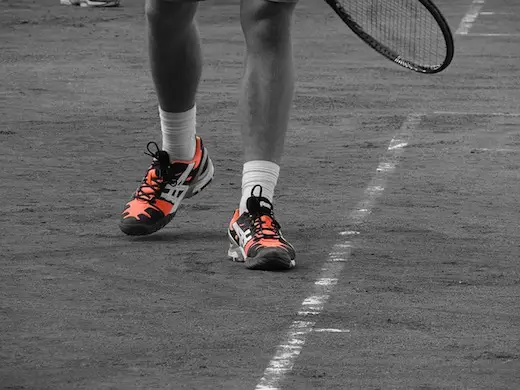- Every two games in regular play
- Every six points played in a tie-break
- At the end of a set depending on the score
Your Guide
 Gavin Davison
Gavin Davison
Have you ever noticed that tennis players don’t always play on the same side of the court?
If you’ve watched professional events, or even if you play competitively yourself, you’ll know what I’m talking about.

While there are three main situations in which players switch sides in tennis, the underlying reasons aren’t as obvious as you might think .
Sides are switched due to:
- Weather Conditions
- Court Conditions, and
- Also for Spectator Viewing Reasons (although that’s not technically as important).
So, coming back to the three points raised above, these are the MAIN SITUATIONS in which you’d switch sides in a game of tennis.
In order to ensure you have a concrete understanding of each situation, I’d like to go into a bit more detail now.
A Breakdown of Each Situation
Changing sides in tennis is PERFECTLY NORMAL.
In fact, it’s a requirement in accordance with the ITF regulations for the game.
You can check out information on these rules and others on the main USTA website – a great resource if you are ever unsure on something to do with tennis in general.
With that said, let me cover the three main situations right now.
1) Every Two Games
When playing competitively, you will change sides after every two games. Now, the reasons for this might be a little More Specific than you first think.
Not only do players change every two games so that things are fair concerning court and weather conditions, but it is specifically two games so that each player gets a turn serving before switching.
Now, this is slightly different in doubles, where you pick an end to serve at and you’ll be serving at that end until the set is over.
But in singles play, you will change every two games, meaning you’ll play a service game on either side each time. The only contrast here is where a set first begins.
In this case, players switch sides after the first game has been played.
And then they will switch on every two games after this. Some people find it easier to explain this as ‘changing on every odd number.’
For example, players change sides at 2-1, 3-2, 4-3, and so on and so forth.
As you can see, these numbers add up to make an odd number.
2) Every Six Points in a Breaker
One of the hardest things for new players to learn is how to actually score in a tie-break.
Not only this but changing sides during a breaker is completely different from the way in which it is done during regular play. In a breaker, one server will kick things off and serve one point.
From here on in, players will each serve for two points until the breaker is over.
But rather than changing sides every two points, which would get a LITTLE RIDICULOUS, players now switch sides after every 6 points.
Theoretically, this can continue indefinitely, as breakers need to be won by two clear points by either player. With that said, it’s pretty rare that breakers will EXTEND LONGER than one or two changes of ends.
Now, at the end of a breaker, you will then switch sides to play the first game of the next set.
And since this is the first game, you then switch straight back. I know, a little confusing, but that’s the way it is.
3) At the End of a Set
This is also a slightly confusing one, so let me clear it up.
Whether you switch sides at the end of a set or not depends on how many games were played.
Remember what I said about the games totaling an odd number before?
Well, that’s exactly how it works for the end of a set too.
If a set ends on an odd total, such as 6-3, 6-1, or 7-6, you will change sides.
For any other outcomes, you will stay at the same side at which you finished the set, and then change only once the first game has been completed.
Bonus – After the Coin Toss
In professional tournaments, you will often see the umpire perform a coin toss before the players go back to warm up.
One of the players will make a heads or tails call, and if they are correct, they get a choice.
They can choose whether to serve or receive, or they can choose which end they want to play the first game on.
Whichever decision they make, the opponent can then choose on the other factor.
For example, if I won a coin toss and chose to serve, you could then choose to take the opposing side to the one we will warm up on.
This is actually quite a TACTICAL MOVE from players. If I chose to serve, you might then put me to serve at the end where I will be serving into the sun.
Of course, that makes it awkward for me and you might have a better chance to win the first game. With this said, coin tosses are only performed if there is an umpire present.
If one isn’t present, you will then proceed to spin your racket to determine who wins the toss.
The way in which this is done doesn’t really matter in all honesty, as one player or pairing will still get the chance to switch sides after the warm-up.
Final Thoughts
I hope that the information above has helped you to feel more comfortable with when to SWITCH SIDES in tennis.
But if you are still feeling a little uncertain, I highly recommend that you watch some competitive tournaments on TV.
You’ll see all of this in action, and you can even take some notes to help out. I must confess when I was learning to score and when to switch sides as a kid, that’s exactly what I did!
Find the article useful? Have anything you’d like to add? Let us know in the comments.


